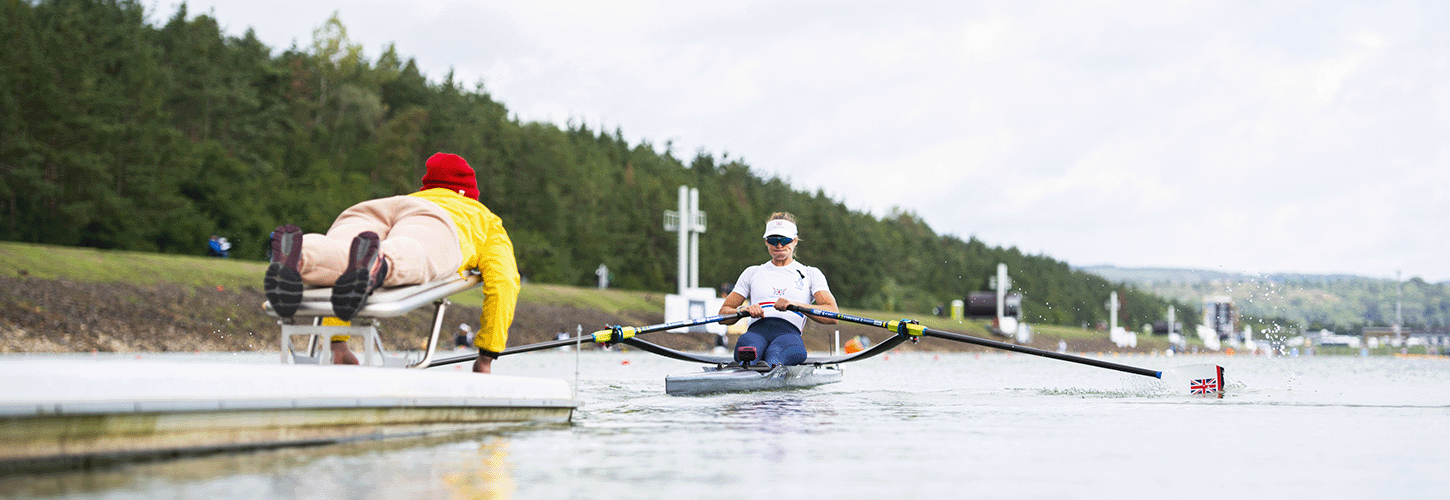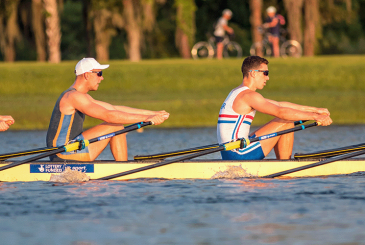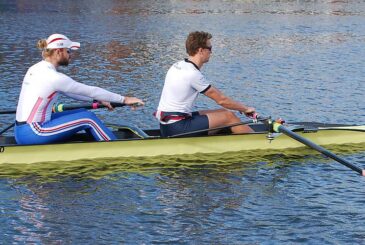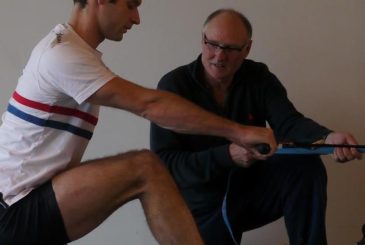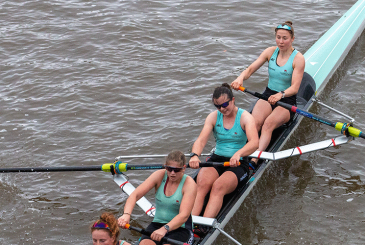Robin Williams provides guidance on starts and how to move into race rhythm
Racing starts are dynamic and adrenaline-filled, but they have a downside too. They give you lots of initial acceleration of course, and are a vital part of racing, but after the thrill of blasting away from the stake boat you have the problem of getting things under control, relaxed and into a rhythm you can actually race with. Crews often start well but remain ‘tight’ going in to pace.
Starts reveal your true pattern of rowing
Starts are also largely automatic – they reveal your true pattern of rowing, your default technique. In other words you tend to revert to type under that kind of intense effort, so if you think you have conquered a technical fault in training, a practice start or flat out burst will put you to the test and confirm it or otherwise. In that sense starts are worth doing any time of the year, and they’re fun!
So the challenge is how to get the boat up to speed as quickly as possible and then to come out of the start phase and into a strong race rhythm. This leads to some questions: how many strokes is a start? How long should the strokes be? How hard should you go? Which muscles are used and how does a start work technically? How does it work physiologically? And so on.
The preferred definition of a start is the time it takes to go from zero to maximum speed, usually between seven to 10 strokes depending on boat type (e.g. single, four, eight etc) and competence of the crew. Some people would argue that it is longer than this but it is generally accepted that there is a start, a transition, and a race pace to deal with in the first 500m.
It is dangerous to keep an all-out sprint going too long
In the first 100m you are building to maximum speed, then in the second 100m you are able to sustain this ‘free’ speed quite easily. However, it is dangerous to keep an all-out sprint going too long because of the energy payback later. So if you accept that by 500m crews will be on their race pace it means that somewhere between 250-400m gone, or within the first minute, you need a good transition. This is only a guide and will vary from crew to crew and with head- or tail wind conditions and from small boat to big boat.
So, the start itself: people use various combinations of stroke lengths for the first 10, and anything can work if you practise it.
Stroke 1
It is good to have heels down rather than being on your toes; trunk tall, arms relaxed, blades covered. Heels down keeps the drive more horizontal and provides a stable platform for your legs and back to work against. If the water is choppy it also helps because your legs are stable and your shoulders can relax. The aim is to prise the boat away, building strongly to the finish and making sure it’s held out cleanly.
TIP: if your first stroke tears then make sure the arms are not tense causing the spoon to mis-track, and also that you are not lifting your body at the ‘go’ or grabbing the pressure violently.
Stroke 2
The first recovery takes you up for stroke two, so make sure you rock over early (not too much) and are not carrying upper body momentum in to the stretcher. Your mass can only slow the boat down here and you need to have the handle speed and trunk movement under control so you can start the new stroke with the feet again. Your last movement in to the front (e.g. dip) will be your first movement out! (e.g. lift)
TIP: the first stroke is potentially a perfect one because you choose your position, you’re already in the water, and you have an instant connection to it. For stroke two try to roll up as if going back to the same place, relaxed until after the entry.
Fast starters are good movers, not just power merchants
Stroke 3
The hull will be picking up speed now and a good concept is to let the hull start to draw you out to (slide) length progressively each stroke.
Over these first few strokes you will be moving faster than the hull. By stroke 10 you will be moving with the hull and getting rhythm from the motion of it. Fast starters are good movers, not just power merchants, and have a feel for their mass.
Strokes 4, 5, 6, 7…
Another useful idea is that you earn rate. In other words if you make hull speed, rate won’t be a problem so the process of the start is to provide power… relaxation… power… relaxation, especially as the speed climbs. Combine 100% effort with 100% relaxation. In the first few strokes you can feel the heaviness of the boat because the boat speed is still building. Where people often fall foul is around stroke 10 and beyond because when the boat reaches full speed it will feel lighter. At this point, people often start to over-reach or pause to maintain the feeling of working the oar.
Enjoy the lightness while it lasts but it is still part of the initial sprint so you need to make the transition into a race rhythm. As the rate naturally drops back a pip or two, you should make the drive phase progressively firmer and the glide longer so that the ratio of drive to recovery improves and hence the rhythm firms up. Sometimes this takes more than one call in the boat, but the concept of ‘pushing’ out on to rhythm rather than easing off the rate is better in my view.
Drills
- Partial starts – first stroke, first three, five etc. Legs, trunk and half arm draw starts.
- Shadow starts – ergo or boat, no oar, just do the movements.
- Challenging starts – square blades; eyes shut; no calls.
This article was first published in Rowing & Regatta magazine in May 2011.
Photo: Merijn Soeters.


